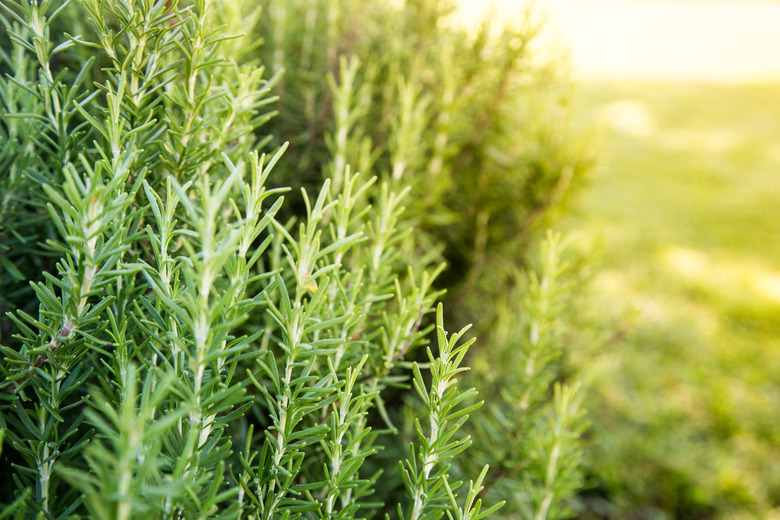Why Is My Rosemary Plant Turning Brown?
Although small brown spots on rosemary leaves is a symptom of insect damage, freezing temperatures, dry air, wet soil or drought can cause entire rosemary plants (Salvia Rosmarinus, formerly Rosmarinarus officinalis) to turn brown.
Rosemary is hardy in U.S. Department of Agriculture plant hardiness zones 7 through 10. In USDA zones 6 and colder, overwintering rosemary plants indoors avoids browning from frosts but can cause other problems. These aromatic shrubs grow 2 to 6 feet tall and 2 to 4 feet wide, and they feature needlelike, gray-green leaves on woody stems.
Rosemary Frost Damage
Snap frosts turn rosemary plants brown, and they can't survive hard freezes. Freezing winds can damage one side of plants, or whole plants can turn brown.
Frost damage can make rosemary plants appear dead, but often there's some living wood remaining. Scrape back the bark on several stems with a thumbnail to check the amount of damage. Living wood is green under the bark, and dead wood is brown.
When new growth appears in spring, sanitize pruning shear blades by wiping them with a cloth that was dipped in rubbing alcohol, and prune the brown, dead stems. Prune just above the new growth. Sanitize the pruning shears again when you've finished.
Winter Sun and Wind
The Lee County Center of the North Carolina Cooperative Extension reports that winter sun and wind can also cause rosemary plants to turn brown. However, the stems with brown needles are not dead, and they should turn green again when the plant resumes active growth in spring. Avoid pruning until plants green up in spring to determine if winter bronzing/browning is the culprit, or if some stems truly are dead.
Brown Tips on Rosemary Leaves
Dry air indoors causes brown tips on rosemary leaves, which leads to die back of stems. Overwintering rosemary indoors provides protection from frosts, but the air in most homes is too dry for the plants, which grow best in humid environments. Rosemary also grows best in full sun, which is nearly impossible to provide indoor plants unless you have a sunroom.
Stand rosemary plants in their containers on trays filled with pebbles and water. Mist the plants with a hand mister filled with clean, cool water every day. Spray the leaves until the water is about to drip.
Rosemary Root Rot
Of all the potential rosemary plant problems, water is the primary culprit for most of them. Wet, poorly draining soil drowns rosemary roots or promotes fungal growth that leads to root rot; either scenario, and the plants turn brown and die.
As a plant that's native to a Mediterranean climate, rosemary is among other herbs that simply cannot tolerate wet soil. It grows best in freely draining soil or potting mix. Heavy clay soil and other poorly draining soil cause brown foliage when rosemary roots die. The North Carolina State Extension notes that the worst effects occur in winter, when rosemary plants stop growing.
Overwatering is a common cause of brown leaves and leaf drop in rosemary plants overwintering indoors. Water rosemary plants in containers when the soil is dry to a depth of 1 inch. Ensure containers have drainage holes. Pour water over the potting soil surface until it flows through the bottom. Don't leave plants in containers standing in water, or rosemary root rot will result.
Rosemary Turning Brown From Drought
Rosemary plants tolerate drought, but their leaves turn brown when the plants receive too little water. Sunny spots and dry to medium moisture, sandy or slightly rocky soil provide the best growing conditions for rosemary. Mixing a 2-inch layer of compost into the soil over the entire growing area when planting improves drainage and moisture retention.
Water in-ground rosemary plants when the soil is dry to a depth of 2 inches. Spray water from a garden hose over the root area of the plants until the water begins to puddle, then stop.
